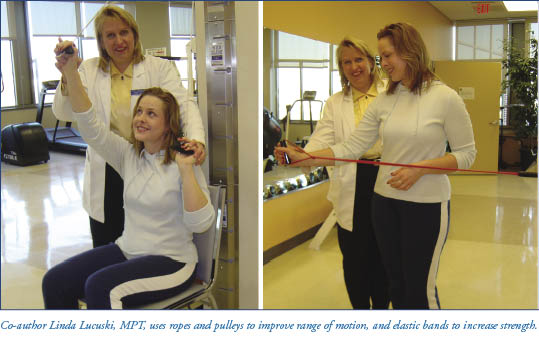Our Narconon Africa Statements
Our Narconon Africa Statements
Blog Article
Top Guidelines Of Narconon Africa
Table of ContentsSome Known Details About Narconon Africa Some Known Details About Narconon Africa Some Known Details About Narconon Africa The 2-Minute Rule for Narconon AfricaAbout Narconon AfricaFacts About Narconon Africa UncoveredThe 4-Minute Rule for Narconon Africa
In a series of documents with Manudeep Bhuller and Katrine V. Lken, we overcome these information difficulties and the nonrandomness of jail time, using new insights right into exactly how imprisonment influences relapse, work, children, and criminal networks - Detoxification program. Figure 1 Our work research studies the results of incarceration in Norway, a setting with two vital advantagesWe can further link this info to various other member of the family, consisting of kids and siblings. We have details on co-offending that permits us to map out criminal networks for observed criminal activities. Second, we can utilize the arbitrary task of criminal instances to courts who vary in their tendencies to send out accuseds to jail.
Some judges send out defendants to prison at a high rate, while others are much more tolerant. We measure a judge's stringency as the average incarceration rate for all various other instances a court manages, after managing for court and year fixed effects, which is the degree of arbitrary task. This quasi-random assignment of court stringency can be utilized as a tool for imprisonment, as it strongly forecasts the judge's decision in the existing situation, but is uncorrelated with various other situation attributes both by design and empirically.
Examine This Report about Narconon Africa
Features of prisoners, including demographics and criminal offense categories, are extensively comparable in Norway and other nations, consisting of the United States, with the exemptions that the US homicide price is much greater, and race plays a bigger role there also. What attracts attention as different, particularly compared to the USA, is the prison system.
Figure 2In Norway, the ordinary time invested behind bars is a little over six months, which resembles most various other Western European nations. This contrasts with ordinary US prison time of nearly 3 years, which is in big part the reason the USA is an outlier in its imprisonment rate compared to the remainder of the world [Number 1]
Some Ideas on Narconon Africa You Should Know
This offers much even more separation in between small and solidified bad guys than exists in the United States. There is no overcrowding in Norwegian prisons and better personal safety, with each prisoner being assigned to their own cell and a higher inmate-to-staff ratio than in the USA (https://scrics-hydraiols-vueny.yolasite.com). Prisons in Norway likewise supply well-funded education and learning, drug treatment, mental health and wellness, and work training programs
Our research on the effects of imprisonment on the transgressor, using the random job of judges as an instrument, yields 3 crucial findings. First, jail time inhibits further criminal behavior. We find that incarceration lowers the probability that an individual will certainly reoffend within 5 years by 27 percent factors and minimizes the equivalent variety of criminal charges per person by 10 charges.
What Does Narconon Africa Mean?
We discover sizable decreases that site in reoffending chances and advancing billed crimes also after accuseds are released from jail. Our 2nd outcome is that predisposition due to option on unobservable specific attributes, if overlooked, causes the erroneous conclusion that time invested in jail is criminogenic. If we just compare criminal offenders sentenced versus those not imprisoned, we discover positive organizations in between imprisonment and succeeding criminal offense.
This stands in comparison to our evaluation based on the random project of judges, which locates an opposite-signed outcome. Third, the reduction in criminal offense is driven by people who were not working before incarceration. Amongst these people, imprisonment increases involvement in programs directed at improving employability and lowering recidivism, and this eventually elevates employment and incomes while dissuading criminal habits.

Jail time causes a 34 portion factor increase in involvement in job training programs for the formerly nonemployed, and within five years their employment rate rises by 40 percent points. At the same time, the probability of reoffending within 5 years is reduced by 46 percentage points, and there is a decrease of 22 in the average variety of criminal charges.
The Narconon Africa PDFs

A plausible explanation for the distinction is that Norway's prison system varies considerably, both in terms of prison-term size and prison problems, from the US jail system. While recognizing the impacts of imprisonment on the wrongdoer is a crucial initial step, recording spillover impacts is also vital for examining criminal justice policy and creating efficient jail systems.
Rumored Buzz on Narconon Africa

Regular least squares estimates expose that children of incarcerated fathers are 1 percentage point most likely to be billed with a crime, family member to a mean of 13 percent, and show no result on college grades. Using our judge stringency instrument, we find no statistical evidence that a dad's imprisonment influences a youngster's own criminal offense or institution qualities, yet we are unable to rule out modest-sized effects.
9 Simple Techniques For Narconon Africa
We specify criminal groups based on network links to previous criminal situations. Our analysis yields three major findings. When a criminal network participant is incarcerated, their peers' probability of being billed with a future criminal offense decreases by 51 portion factors over the next 4 years. Furthermore, having an older sibling incarcerated lowers the chance his younger brother will be billed with a criminal activity by 32 portion points over the following four years.
Report this page